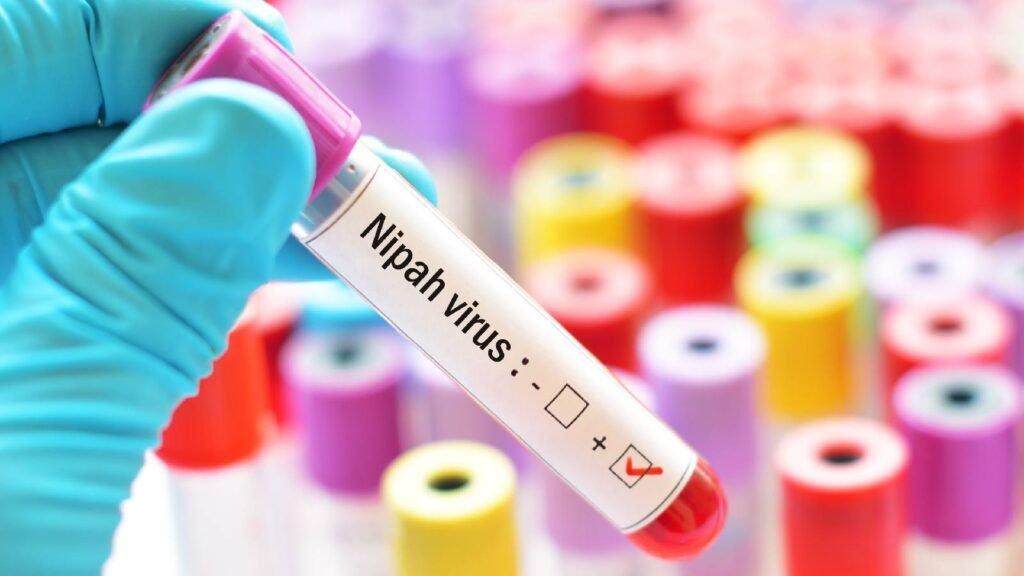[ad_1]
Nipah virus cases are on a rise in Kerala, according to news reports in India. Reports also indicate that at least 706 people are on the contact list, of which 77 come in the high-risk category. The Nipah virus was first recognised in 1999 in Malaysia when there was an outbreak among pig farmers. In 2001, the virus was also identified in Bangladesh. Later, some cases popped up in eastern India. According to the World Health Organization, the fatality rate is estimated at 40 percent to 75 percent, but this can vary by outbreak. It depends on local capabilities for epidemiological surveillance as well as clinical management. So, check out the symptoms of Nipah virus and how to protect yourself from it.
What is Nipah virus?
Nipah virus or NiV, which first spreads between humans and animals, belongs to the genus Henipaviral in the family Paramyxoviridae, says Dr Shridhar Deshmukh, MD General Medicine, Consultant Physician and Intensivist, Ruby Hall Clinic, Pune. He says people should worry about the Nipah virus because of its –
• High fatality rate
• Severe symptoms
• Lack of specific treatment
• Potential for human-to-human transmission
• Past history of outbreaks

Symptoms of Nipah virus
While the virus is not as widespread as some other infectious diseases, it poses a significant threat to public health when it does emerge. That means early detection, containment measures and public awareness are crucial in preventing its spread.
Here are some symptoms to watch out for:
• Fever
• Headache
• Cough
• Breathing trouble
• Vomiting
• Sleepiness
• Disorientation
• Seizures
Causes of Nipah virus
It is a zoonotic virus, which means that it originates in animals and can be transmitted to humans, explains Dr Deshmukh. Here are some causes:
Select Topics of your interest and let us customize your feed.
PERSONALISE NOW
1. Natural reservoir
Fruit bats of the Pteropodidae family are considered the natural reservoir hosts of the Nipah virus. These bats can carry the virus without showing symptoms.
2. Intermediate hosts
The Nipah virus can be transmitted from bats to other animals, known as intermediate hosts, which can amplify the virus and potentially transmit it to humans. In some outbreaks, pigs have been identified as intermediate hosts.
3. Direct bat-to-human transmission
Direct transmission of the virus from bats to humans can occur through exposure to bat saliva, urine or droppings, particularly in areas where humans and bats come into close contact.

Treatment for Nipah virus
As of now, there is no licensed vaccine or specific treatment for Nipah virus infection, so prevention remains a critical strategy, the expert tells Health Shots.
The following can be done:
• Infected people should be isolated to prevent the potential spread of the virus.
• Strict infection control measures, including the use of personal protective equipment are essential.
• People with severe respiratory distress may need mechanical ventilation or supplemental oxygen to assist with breathing.
• Maintain hydration and electrolyte balance.
• Intravenous (IV) fluids may be administered to manage dehydration and maintain electrolyte levels.
As for preventing measures, you should do the following –
• Wash your hands with soap and water, especially before eating.
• Stay away from sick pigs or bats.
• Don’t go to places where bats are found.
• Avoid consuming or consuming products that could be contaminated by bats, such as raw fruit or fruit that has fallen to the ground.
• Avoid coming into contact with someone who has been known to have the NiV virus by contact with their blood or body fluids.
This way, you can protect yourself from getting infected.
[ad_2]

